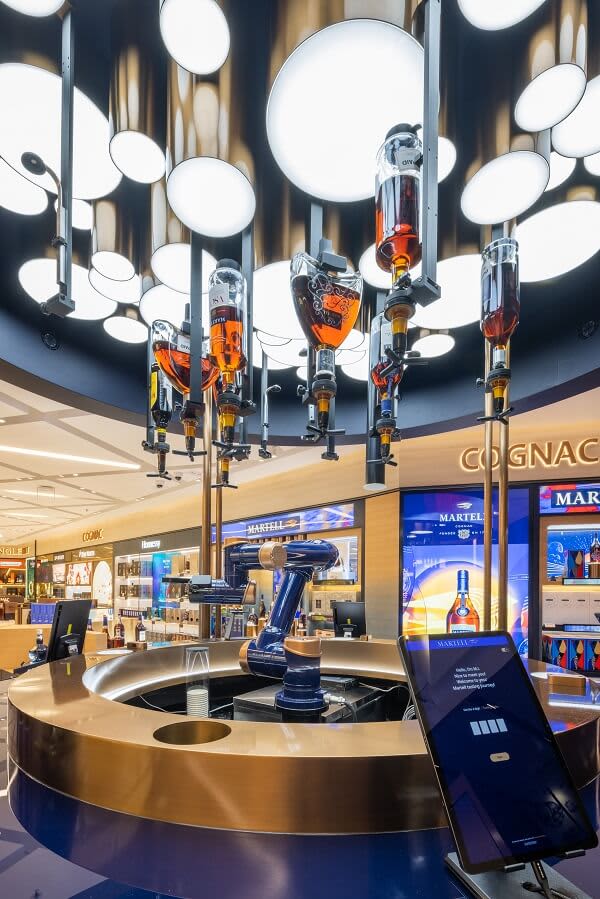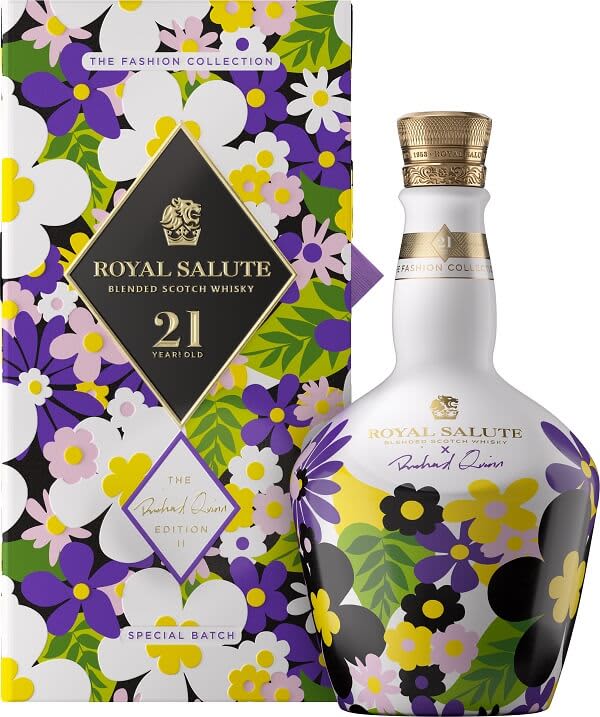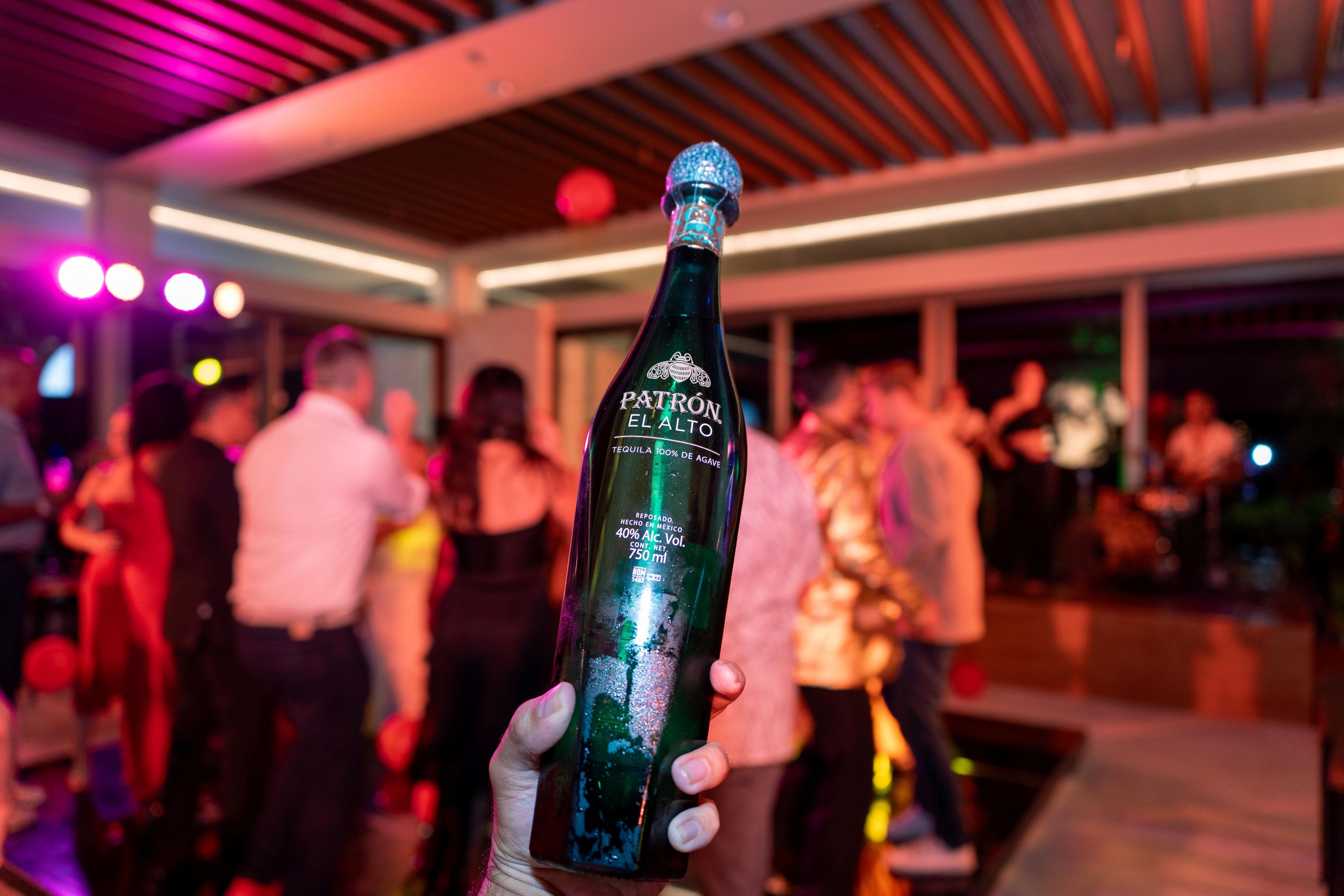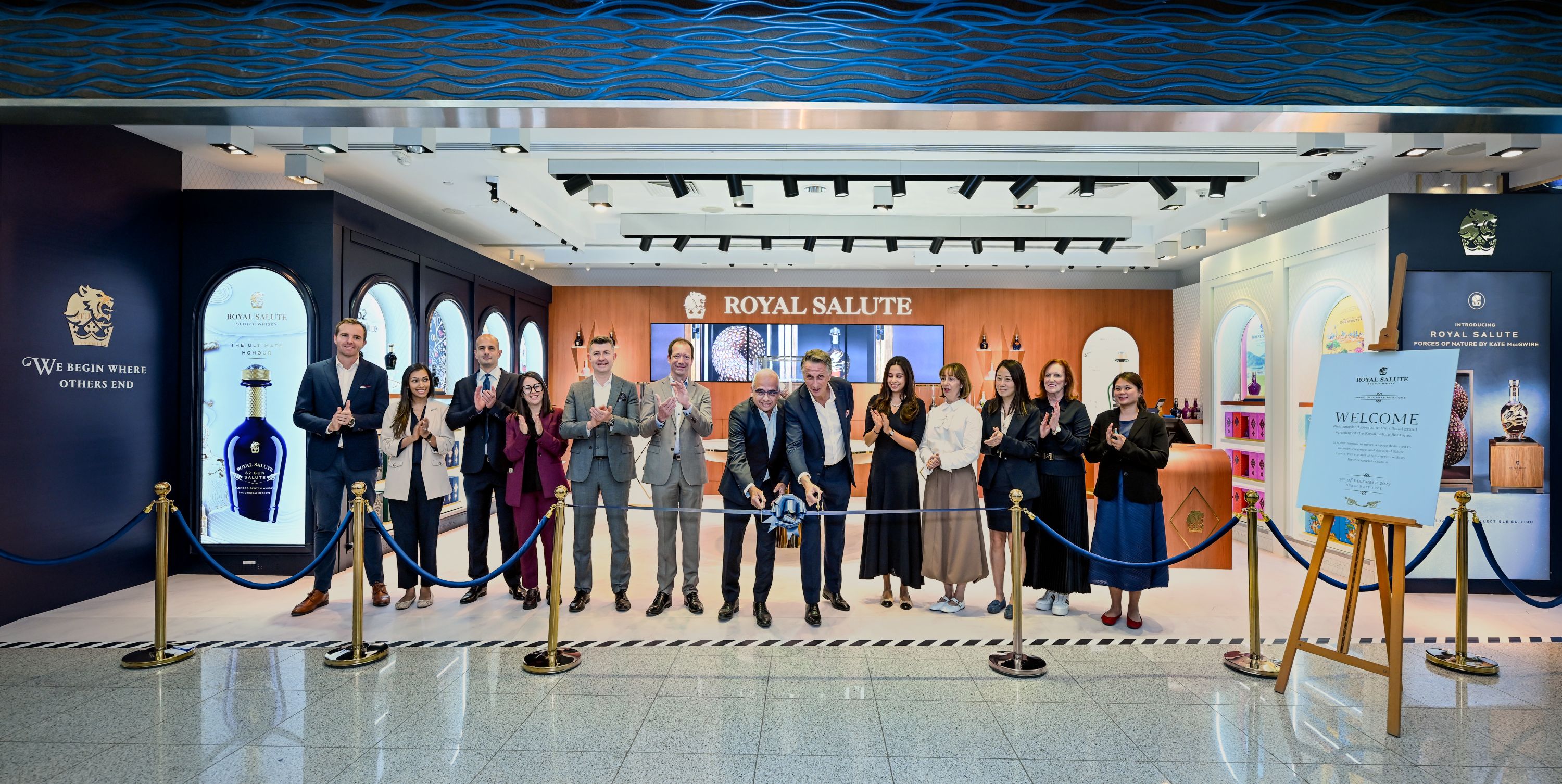December 21, 2023
Pernod Ricard uses activations to elevate brands & target prestige customers

The Martell AI bartender at Changi Airport is one of Singapore’s top tourist destinations
Increasingly, Pernod Ricard GTR is investing in digitized brand activations in travel retail that enable the group to better understand its customers — discerning global travelers looking for premium products, brand-centric experiences and gifting opportunities.
Recently, departing Chairman and CEO of Pernod Ricard GTR Mohit Lal and colleague Anuj Roy, Director of Strategy & Insights, held a session focusing on their findings from a recent study on the demand space in travel retail. After the session, GTR Magazine caught up with Liya Zhang, VP of Marketing, to discuss some of the group’s recent activations.
Connection with purpose
Pernod Ricard GTR’s demand space research revealed a significant shift in traveler behavior following the pandemic. The study found that 54% of travelers now show a preference for interacting with digital touchpoints prior to engagement, a notable increase from the pre-COVID era, when only 18% exhibited this preference.
Zhang emphasizes the growing preference for digital engagement among travelers. She notes, “This is a habit picked up by consumers in a very special moment. We are very pragmatic about it: we know those who are engaged with digital / omnichannel touchpoints are likely to spend more. We are really looking at finding the best omnichannel connection strategies.”

The Jameson ‘Arrive Like a Local’ campaign was a global initiative digitally connecting travelers with the brand
Zhang points out that while company research confirms the increasing trend, the concept of omnichannel isn’t a novelty. She elaborates, “Many brands and retailers have tried and tested this area, but now it’s about connection. First, connection with purpose and second, connection with impact.”
Zhang further states that Pernod Ricard is acutely aware of the unique nature of consumer engagement in travel retail compared to domestic markets. The company already leverages social media for pre-targeting. She clarifies: “We need to be very clear about what we mean by connection with purpose. Overall, our marketing objectives are footfall and conversion, but not just a click for a transaction. We also want to look at how much time is spent to justify the digital investment.”
The company places high importance on creating impactful connections in travel retail. Annually, Pernod Ricard GTR conducts more than 1,000 activations across roughly 55 of the top airports. This strategy prompts a continuous internal assessment of whether each activation can be effectively supported with digital means, and whether such digital support is necessary. The company focuses on aligning physical presence in airports with digital strategies to maximize impact.
Zhang says it’s time for the industry to redefine the role of digital, especially omnichannel and its marketing KPIs. “But to achieve that, I don’t think a brand alone can do it. Because in the end its an ecosystem and retailers play a very important role – from their website or app to customer database. It’s not a stand-alone campaign; it’s a collaboration opportunity.”
In specific categories, Pernod Ricard GTR has a clear goal of emerging on top. While the primary focus often remains on increasing footfall for higher conversion rates, the company also sees potential in other areas. One such area is the recruitment of younger travelers and new shoppers into their channel, diversifying their consumer base and adapting to changing market dynamics.

Chivas XV hits the right premiumization note, bringing added value
Scaling premiumization
Elevating brands, targeting prestige customers and driving premiumization opportunities — these are the key trends Zhang spends her time considering. “We have had a lot of initial success with brand extensions like Jameson Triple Triple vs Jameson original. We have the Chivas Extra 13 vs Chivas 12, and both actually launched during COVID. Within two years, these key products have reached sales between 10 to 15% of the original. So, because the brand has scale, it brings more value. Another example is the great performances for Chivas 18 and Chivas XV,” she says.
It’s a direction Pernod Ricard GTR is keen to continue toward. “No one doubts the premiumization trend. But now, with a softer economic environment and whether the spend per PAX remains the same, we are closely observing traveler spending trends. People become more selective.”
She says travelers’ purchasing habits have become more discerning. “They're going to purchase the products that make them feel their money was well spent. So now brands should be looking deeper into what premiumization means. It’s not just a 30% price hike or another limited edition. In the end its about what people feel right about, what makes them feel fulfilled. This could be scarcity, craftsmanship, something special about the flavor or something else that will drive brands to be more demanding in their product innovation journeys.”

The Royal Salute x Richard Quinn collaboration is a bold creative expression to elevate the image of Scotch whisky among luxury consumers
Over the past 20 years, the wallet share has not changed much, she says: “Footfall was always around the 6 to 7% mark for W&S, while for P&C it’s three times bigger. So, it’s about how to close that gap. Of course, even 1% improvement would be great, but it’s not easy. The spirits category has the ability to increase footfall and to drive new shoppers.”
AI bartending
At Changi, the Martell AI bartender was selected by the airport as a top “must do” activity. This brand activation was exceptionally interactive and engaging, and it was successful at attracting eyeballs and footfall. “Something like this provides a real difference between the wine & spirits (W&S) and perfume & cosmetics (P&C) categories,” says Zhang.
How to convert travelers to shoppers is always a big topic. The Martell robot activation served that objective well, says Zhang. “But that doesn’t mean we are going to do it for another 10 years. Innovation is ever evolving.”
Getting to know prestige customers
Personalization retains its importance, with a concerted effort to engage High-Net-Worth Individuals (HNWIs) at the forefront of strategies to dominate the prestige-plus segment, according to Zhang. Research indicates that personalization holds significant appeal to consumers within the top-nine nationalities, particularly when it involves gifting or self-pampering. These customers pursue exclusive experiences and value the distinctive appeal that personalized touches bring to their purchases.
Royal Salute is another important brand in Pernod Ricard’s portfolio. “We are very active on the product innovation side to elevate our prestige brands. Royal Salute 21 might normally be seen as more traditional. But now we want to highlight the fashion edition in partnership with Richard Quinn. It’s a bold creative expression to elevate the Scotch whisky image. We want to be disruptive in this category because disruption brings energy.”
Zhang emphasizes that Royal Salute aims to be more than just “another prestigious Scotch,” but instead a symbol that meets the traveler's need for a luxury gift. The focus is on providing an item that transcends the status of the best bottle of Scotch, one that resonates with luxury, compelling the traveler to return for the experience of shopping an authentic luxury brand.




